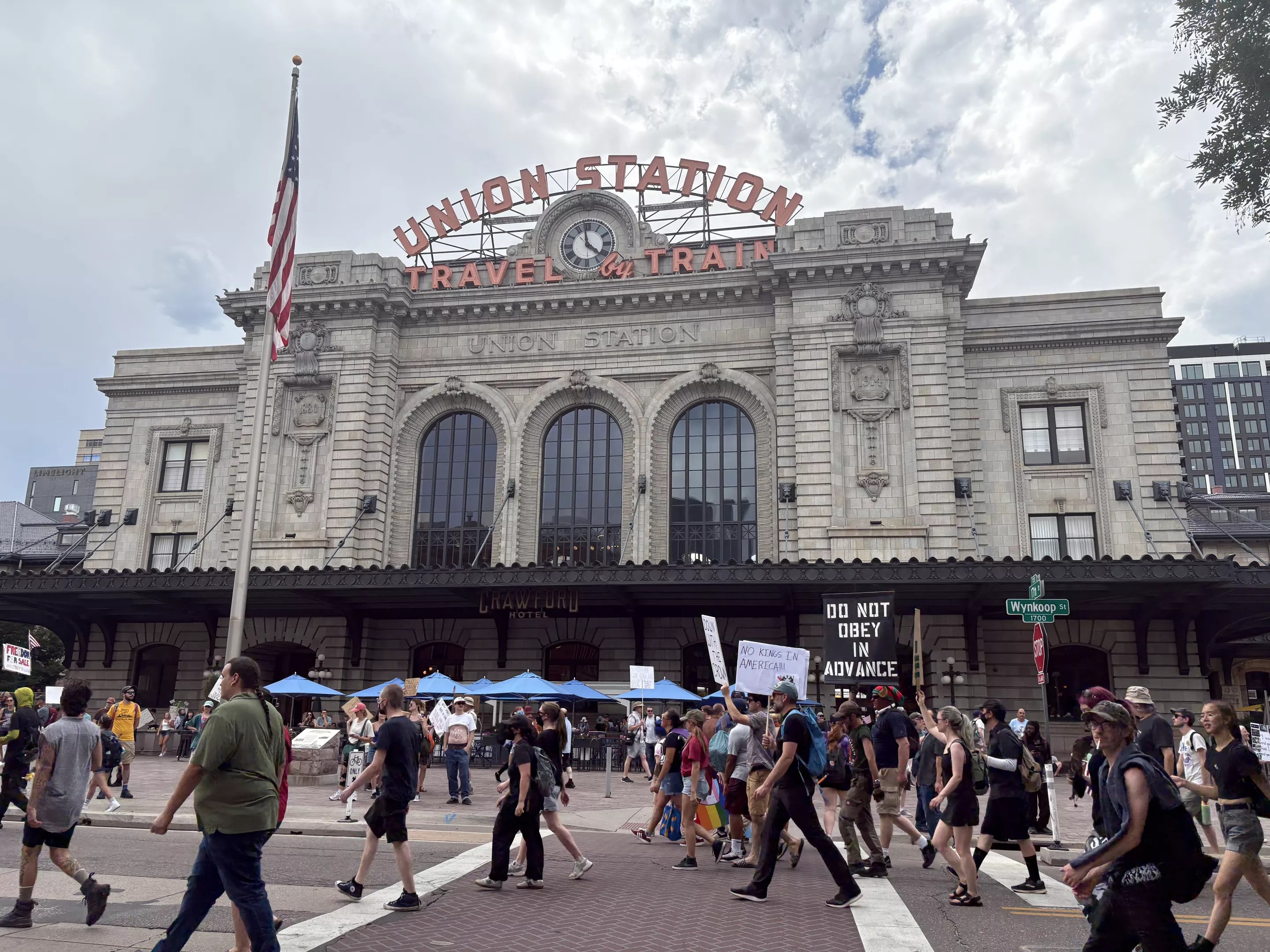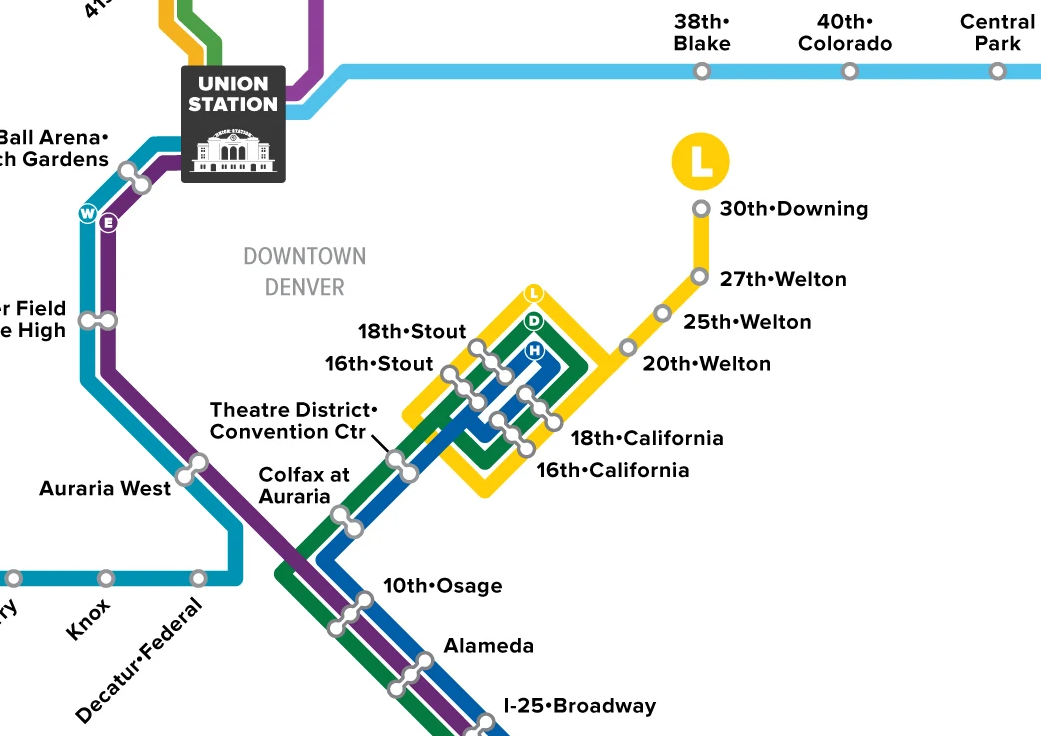
Patricia Calhoun

Audio By Carbonatix
Since Donald Trump began his second term as president, protests like No Kings and 50501 Colorado have drawn thousands to the Colorado State Capitol and nearby parks.
Right next to the Capitol is RTD‘s Civic Center Station and the Colfax and Broadway bus stops, where many of the transportation district’s most popular routes intersect. Just over a mile away is Union Station, a stopping point for light-rail trains and even more busses connecting through the region.
RTD has an operational plan outlining how the agency will respond to disruptions in service, including protests, in these areas, and the agency says it is committed to adjusting that plan as protests in Denver continue.
“We’re always going to make decisions based on safety,” says Stuart Summers, chief communications and engagement officer for RTD. “Safety for our employees, safety for our customers, our property and our vehicles. …[Protesters] want to get attention. They want to be disruptive, and that’s a great way to get eyes is to go to a transit center where there’s a lot of people.”
During the No Kings protest on June 14, several rounds of protesters marched downtown, causing RTD to stop running services into Union Station for two separate periods. The first was for around ninety minutes at 4 p.m., and the second lasted about 45 minutes later in the evening.
“We work with the Denver Police Department and they said, ‘We don’t feel it’s safe to keep having trains and busses moving in at Union Station,'” Summers says. “That’s why we temporarily closed it and had the busses and trains turn at whatever was the safest stop prior to Union.”
The A Line to the airport, for example, turned around at 38th and Blake streets, which was frustrating for people trying to get to the airport since that station is around two miles from Union Station. But RTD did not want to risk anyone being hit by a train or bus or create a situation where protesters engaged with RTD vehicles, Summers says.
“Let’s make sure we don’t bring more people into this area or have vehicles that would be operating that could become potentially dangerous for people on the streets,” he notes.
The weather was hot on June 14, and Summers suggests that many people walking to Union Station were just looking for shade or an early ride home, making it appear like the terminal was becoming a protest hub when it really wasn’t. “It seemed like a whole crowd of people were headed to Union Station, but they just really wanted to get on a train,” he says.
If they arrived right at 4 p.m., they would have had to wait until 5:30 to get that train, and Summers says he understands their frustration.
A hot-weather-plus-protests situation could occur again on July 4, when several demonstrations planned for Independence Day will coincide with other events downtown.
A protest at Palantir headquarters at 1200 17th Street is slated for noon to 4 p.m., while a Rise and Represent Powwow is taking place at the State Capitol from noon to 5 p.m; protesters also plan marches around town starting at 7 p.m. The Colorado Rockies game, which starts at 6 p.m., tends to draw large crowds since there are fireworks at the end.
RTD will add extra train cars to the D, E, H, W and L rail lines that are operating on the holiday schedule Friday through Sunday to help people get to and from events. The district hopes those trains will run normally, but it has plans if protests interrupt service.
“The challenge for us downtown is the light rail system in the loop runs on city streets, so if you have demonstrators or protesters that are walking in what we call the alignment, where the track is, we can’t run trains,” Summers says. “Anytime that we know there’s going to be some sort of a demonstration or protest that’s going to impact service, we hold that service at a safe distance.”

The downtown loop, pictured here, runs on city streets.
RTD
With the downtown light rail loop, D, H and L line trains get turned around or rerouted to Union Station before they enter the loop, which is just past the Colorado Convention Center and runs up to 20th and Welton streets in the Five Points neighborhood.
“In the event that DPD closes streets or limits pedestrian access to the Downtown Loop, all light rail trains will be rerouted to Denver Union Station,” RTD explains in a news release on protest plans. “If Union Station is closed for safety reasons, connections will not be provided to that facility, and services will continue to operate along the remainder of each individual rail line.”
The same will be true for bus service, which RTD attempts to reroute around protests and street closures or turns around before Union Station in cases where the terminal has been deemed unsafe.
Tina Jaquez, an RTD public relations manager, says RTD is aware that people are encouraged to take public transit to protests, which is great, but the district wants those people to be prepared for detours and delays.
“We can’t run when there’s a crowd,” Jaquez says. “Promoting RTD as a way to get to the protests is good as long as the expectation is set that it’s a protest and, when successful, protests disrupt things.”
RTD will continue working with the DPD to assess changing situations, Summers adds; it can send its own Transit Police Department on increased patrols if needed, too.
“We fully anticipate there’s going to be more of these demonstrations,” Summers says. “We’re trying to figure out how do we fine-tune our operational plans as well to ensure that we’re more responsive.”
Decisions are made in real time, so RTD encourages people to download RTD’s Next Ride app and bookmark the Service Alerts webpage for up-to-date information.